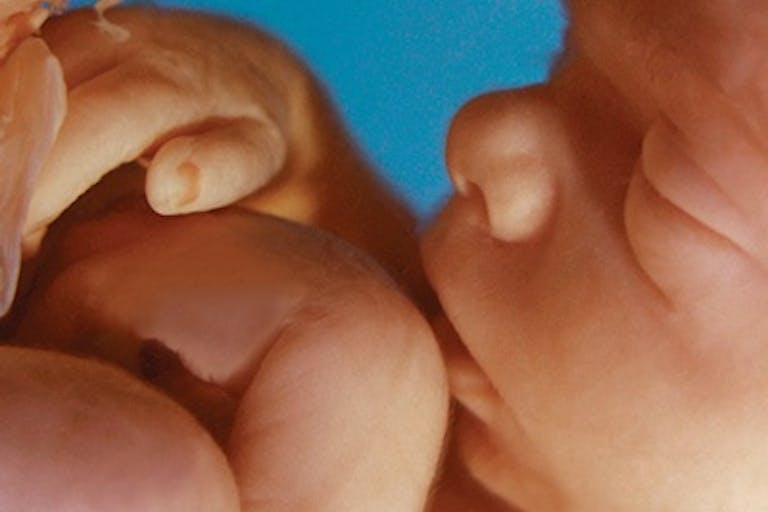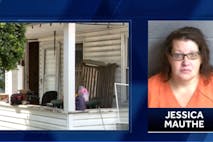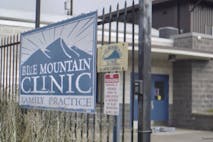
Is your child's college tuition funding sex toys?
Nancy Flanders
·We are urgently seeking 500 new Life Defenders (monthly supporters) before the end of October to help save babies from abortion 365 days a year. Your first gift as a Life Defender today will be DOUBLED. Click here to make your monthly commitment.

Abortion clinic worker describes what she witnessed in clinic, appeals to other workers
On June 3, Live Action published an article about Deborah Henry, a former abortion clinic worker who became pro-life and then gave her testimony at a conference sponsored by the Pro-Life Action League. In the Live Action article, I discussed how Henry and the other abortion counselors never referred to the unborn babies as anything but “tissue” or “clusters of cells.” They never use the term “baby.”
The different types of abortions
Deborah Henry describes the types of abortions performed at her clinic. The first type of abortion was suction curettage, or vacuum curettage.
The vacuum curettage is normally done between 6 and 8 weeks of pregnancy. The instrument is inserted into the woman’s uterus, and then the baby is sucked out of the uterus. She experiences the pain and the baby is then pulled into the jar. We would take it out of the little sac, lay it in the pan. The doctor would then come in and examine it. If he felt that it was adequate enough tissue, we would take the baby, put it into a jar and send it to the lab if the mother had insurance. If she had no insurance, the baby was simply put down the garbage disposal.
It is horrific to imagine the bodies of babies ground-up in a garbage disposal. Not only is this terribly disrespectful to the aborted child, and an obvious health hazard, it puts patients at risk because the remains were not properly examined to make sure that no parts of the baby or placenta had been missed and left behind. Any part of the baby or placenta left in a woman’s uterus after an abortion can cause an infection. Infections after abortion can be dangerous or even fatal if prompt medical care is not sought. For example, 20-year-old Rhonda Hess died of a post-abortion infection.
Children aborted by vacuum curettage are ripped apart; their arms and legs (which develop around the seventh week after conception ) are often torn from their bodies. At eight weeks, recognizable body parts are left in the aftermath of a vacuum curettage abortion. Henry’s clinic only performed these abortions up to about eight weeks, but many clinics now perform them much further in pregnancy. For example, Planned Parenthood will do a suction abortion as late as 16 weeks.
Henry then describes the two types of late-term abortions that were performed at her clinic.
First she describes a D&E abortion, performed in the second trimester:
The procedure starts with an aspiration of the fluid, and then the doctor uses his forceps to go in and literally break the limbs off of the baby. There was one incident where a white piece came out and I asked the doctor later on what it was, and it was the baby’s skull. I can still, to this very day, hear the crushing noise of that baby’s skull being crushed. The women are feeling pain. It is not until after the procedure that they realize what is happening to their baby or to themselves. Ninety percent of these women start crying afterwards and it is not because of the pain.
The other type of abortion performed at the clinic were saline induction abortions, where a caustic salt solution is injected into the woman’s uterus, poisoning the baby. The woman then goes through labor to deliver her dead child. This method of abortion is no longer used because it resulted in so many live births and had such a high complication rate.
Confronting reality
Dear Reader,
Every day in America, more than 2,800 preborn babies lose their lives to abortion.
That number should break our hearts and move us to action.
Ending this tragedy requires daily commitment from people like you who refuse to stay silent.
Millions read Live Action News each month — imagine the impact if each of us took a stand for life 365 days a year.
Right now, we’re urgently seeking 500 new Life Defenders (monthly donors) to join us before the end of October. And thanks to a generous $250,000 matching grant, your first monthly gift will be DOUBLED to help save lives and build a culture that protects the preborn.
Will you become one of the 500 today? Click here now to become a Live Action Life Defender and have your first gift doubled.
Together, we can end abortion and create a future where every child is cherished and every mother is supported.
Henry witnessed terrible things in the abortion clinic. She describes one incident:
There was one incident of a baby who was about 16 weeks. One of the girls had called me into the lab as she was cleaning up, and on the end of the cannula, which was the instrument at the end of the hose, was a little baby’s foot. It was about half an inch long. This foot was perfectly formed. I couldn’t believe it. I was so amazed by the sight of it. It was all black and blue. When you drop something on your foot and your foot becomes bruised, it is usually because of pain. This baby’s body was completely ripped apart because of the abortion.
In every abortion facility, there are some women who come for repeat abortions. In her testimony, Henry described being “dumbfounded” when a woman came in for her ninth abortion.
Henry had this to say to those who might criticize her and other pro-lifers for speaking out about the graphic nature of abortion:
I was told that one of the Pro-Life problems is that we talk too much about the babies being ripped apart. We show terrible pictures–we dwell on these too much. What are we supposed to do? This is the reality of abortion. Are we supposed to say, Oh, don’t go into that abortion–your fetus, or tissues, will become deceased? It doesn’t make sense. You tell them the truth–the facts. We are not there to lie to them. I am there to tell them the truth. Babies are being ripped up. Yes, babies do look like this after an abortion. And yes, it does hurt your baby, and most of all, it does affect the woman.
Dealing with nightmares
Henry then described a graphic nightmare she had while working at the clinic. In the dream, she was asked to dispose of a living, fully formed baby:
I had this dream that I was in the examining room with the doctor, and we had just completed an abortion. Alongside her table was another little table and we had a little baby …. I had never really experienced this, but this baby was born. He was just laying on the side of the table. His little leg was dangling off the side and his body was covered with a paper towel. The mother looked over and said, “Do I have to lay here and look at this baby?” The doctor asked me to take the baby into the lab. I picked up the baby, It was one of those dreams where there is an endless hall, and you are walking on and on and on, and you are never getting to your destination. All I could feel in my hand was this big baby. I woke up and I was crying and in a sweat. I was never so shaken by anything in my life. It was the most horrible experience that I have ever had. For the first time in my life, I realized that what I had been involved in was killing innocent babies. I didn’t do the abortion itself, but I might as well have. I handed those instruments to the doctor.
She said she still has nightmares:
I still have nightmares–not as often and not as much, but I think it is a reminder to tell me that I have to keep going on for these babies, and with the love and support that I get from all my new Pro-Life friends, I am able to do this.
An appeal to other abortion providers
At the end of her speech, Henry made a plea to any abortion clinic workers who might be listening:
I hope that there are some people here infiltrating our convention because you know what I am saying is true. I want you to think about this. When you go home and you have nightmares about those dead babies, it is because you are killing them. That is all there is to it. Abortion is murder. There is no other way to put it. Hopefully, you will call one of us, and, I guarantee, we will be there with open arms to greet you and to help you through this ordeal.
Supporting abortion workers who leave the clinic is vital pro-life work. With organizations such as And Then There Were None, pro-lifers are reaching out to clinic workers like never before.
Live Action News is pro-life news and commentary from a pro-life perspective.
Contact editor@liveaction.org for questions, corrections, or if you are seeking permission to reprint any Live Action News content.
Guest Articles: To submit a guest article to Live Action News, email editor@liveaction.org with an attached Word document of 800-1000 words. Please also attach any photos relevant to your submission if applicable. If your submission is accepted for publication, you will be notified within three weeks. Guest articles are not compensated (see our Open License Agreement). Thank you for your interest in Live Action News!

Nancy Flanders
·
Investigative
Carole Novielli
·
Investigative
Bridget Sielicki
·
Investigative
Carole Novielli
·
Investigative
Bridget Sielicki
·
Investigative
Bridget Sielicki
·
Guest Column
Sarah Terzo
·
Abortion Pill
Sarah Terzo
·
Guest Column
Sarah Terzo
·
Guest Column
Sarah Terzo
·
Guest Column
Sarah Terzo
·